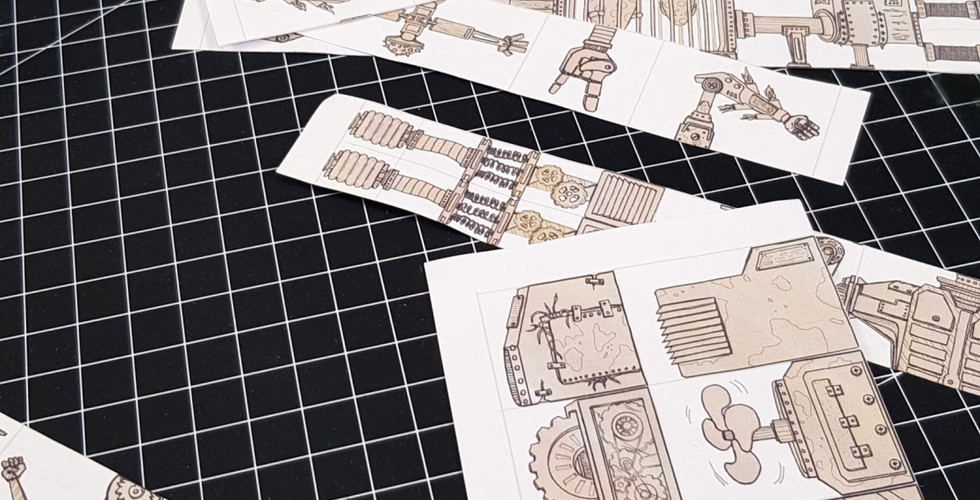Scraps: Game Dev. Diary 2 – First Playtest(s)
- Pektis Studio

- Aug 1, 2021
- 2 min read
THE FIRST PROTOTYPE:
After developing the initial concept and idea a bit more, it was time to make the first prototype of the game to try out the mechanics to see if they could work. A simple paper prototype was sufficient enough for the first couple of tests just to check how the mechanics would turn out. Since most of the body parts and the card design was already drawn, it was time to print and cut, cut and more cut….. yeah, there was a lot of cutting! Eventually, everything was ready for the first play test.
*Side note to anyone interested in boardgame design and would like to make prototypes: Invest in a proper paper cutter, and an ink conserving printer that can print on both sides… will save you a lot of effort and time. FIRST PLAYTEST(S): After the first couple of tests, it was immediately clear that the game needed more balance when it came to the turn actions, so before further development I jumped on to modify the board, adding more action spaces and making some minor adjustments to the “science fare” action, initially meant to be a space to compete for events related to intelligence and technology while having the “Arena” for competitions related to more “physical” attributes; Now all of the competition and events take place in the arena, and the “since fare” was converted into a “market” to be able to sell the extra parts that the players no longer need.
SECOND PLAYTEST:
After the board expansion and adding the new actions, the test result was satisfying, the game seemed to be on the right track so far. Of course, it still needed to be balanced in many different aspects, but at this point it the game engine was already working nicely.
The main feedback recorded from these internal testing rounds was:
Balancing the Body parts Cards “cost” vs. the amount of scraps “resources” players gain from the action.
The “Body Parts” also needed to be divided into different categories to help identify the robot structure as making sense of how to build the robots, thus, a new card concept design was needed for 3 main “body parts” categories: Heads – Main Body – Limbs (arms and legs)
The “Competition” cards have 3 different styles of events, some of which require the robots to have certain values of strength/defense/intelligence/speed… these values are calculated based on the parts that make up the robots and they also needed to be slightly balanced based on how many parts we were able to fit during the game, and what was the sum of these values on average






























Comments